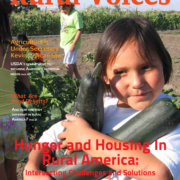HAC News: January 8, 2014
HAC News Formats. pdf
January 8, 2014
Vol. 43, No. 1
• “War on poverty” declared 50 years ago • Congress facing budget deadline • 2015 budget likely to be late • Senate committee approves NAHASDA reauthorization • Watt sworn in at FHFA • USDA proposes nondiscrimination changes • Final rule provides exemptions from appraisals for high-cost mortgages • CFPB issues final rule on mortgage disclosures • CFPB seeks help improving closings • Conducting Homeless Counts on Native American Lands: A Toolkit – Webinar
January 8, 2014
Vol. 43, No. 1
“WAR ON POVERTY” DECLARED 50 YEARS AGO. In his first State of the Union address on January 8, 1964, just seven weeks after John F. Kennedy’s assassination, President Lyndon Johnson announced: “This administration today, here and now, declares unconditional war on poverty in America. I urge this Congress and all Americans to join with me in that effort. It will not be a short or easy struggle, no single weapon or strategy will suffice, but we shall not rest until that war is won. . . . Poverty is a national problem, requiring improved national organization and support. But this attack, to be effective, must also be organized at the State and the local level. . . . For the war against poverty will not be won here in Washington. It must be won in the field, in every private home, in every public office, from the courthouse to the White House.” HAC is honored to work with the rural housers who continue to strive towards this goal.
CONGRESS FACING BUDGET DEADLINE. Congress is back in session this week after the holidays. House and Senate appropriators are working to reach agreement on and pass a final 2014 omnibus spending bill before January 15, when the current stopgap continuing resolution expires. Another short-term CR could be needed to avoid a second government shutdown while negotiations continue. Details of the omnibus package are not expected to be revealed until shortly before consideration by the full House and Senate. The overall budget cap for FY14 is $1.012 trillion. Both houses have decided, but have not made public, how that total will be divided among federal agencies. Also yet to be decided is an extension of the federal government’s borrowing authority, which expires February 7. That may be the next showdown.
2015 BUDGET LIKELY TO BE LATE. The Administration’s request for FY15 spending may not be released until a month or so after its due date in early February. The compromise budget agreement completed in December (H.J. Res. 59) set a 2015 overall budget of $1.014 trillion.
SENATE COMMITTEE APPROVES NAHASDA REAUTHORIZATION. On December 18, the Senate Committee on Indian Affairs approved S. 1352, the Native American Housing Assistance and Self-Determination Reauthorization Act of 2013. A companion bill has not yet been introduced in the House.
WATT SWORN IN AT FHFA. Former Representative Mel Watt (D-NC) was sworn in on January 6 as head of the Federal Housing Finance Agency, which oversees Fannie Mae, Freddie Mac, and the Federal Home Loan Bank system. FHFA may now move forward on some stalled initiatives. Particularly important for rural areas would be adoption of regulations implementing a provision of the Housing and Economic Recovery Act of 2008 that imposes on Fannie Mae and Freddie Mac a “duty to serve” three specific underserved markets – rural areas, affordable housing preservation, and manufactured housing. Watt could also require Fannie Mae and Freddie Mac to begin contributing funds to the National Housing Trust Fund and the Capital Magnet Fund.
USDA PROPOSES NONDISCRIMINATION CHANGES. Comments are due January 27 on a proposed regulation on nondiscrimination in USDA programs and activities. Changes would require collection of data voluntarily provided by participants (already collected by RD), mandate use of alternative dispute resolution services, and add protection against discrimination based on political beliefs and gender identity. Contact Anna Stroman, USDA, 202-205-5953.
FINAL RULE PROVIDES EXEMPTIONS FROM APPRAISALS FOR HIGH-COST MORTGAGES. A regulation issued by the agencies that oversee mortgage lenders exempts streamlined refinances and transactions of $25,000 or less from a provision requiring appraisals for higher-risk mortgages. Loans on manufactured homes will be exempt until July 18, 2015 and then will vary depending on circumstances. Contact Robert L. Parson, OCC, 202-649-6423.
CFPB ISSUES FINAL RULE ON MORTGAGE DISCLOSURES. The Consumer Financial Protection Board has established new disclosure requirements and forms for most consumer mortgage transactions, effective August 1, 2015. The rule also provides guidance on compliance and includes copies of forms in English and Spanish. Contact CFPB’s Office of Regulations, 202-435-7700.
CFPB SEEKS HELP IMPROVING CLOSINGS. Comments, including answers to specific questions, can be submitted by February 7 on key consumer “pain points” associated with mortgage closings and ways to address them through market innovations and technology. Contact Monica Jackson, CFPB, 202-435-7275. [tdborder][/tdborder]
|
CONDUCTING HOMELESS COUNTS ON NATIVE AMERICAN LANDS: A TOOLKIT |



